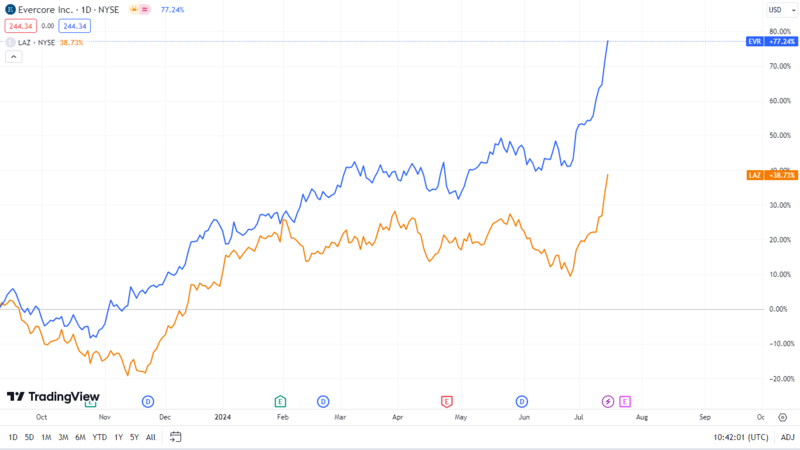The Financial Sector is set to Boom: Don’t Miss Out on these 2 Stocks.
The S&P 500 has risen 1.36% to 5,667 in the past week, and the 10-year Treasury yield has fallen to a four-month low of 4.158%. In anticipation of lower interest rates, the bull market’s laggards are finally starting to benefit from the rally.
Saqib Iqbal, a financial analyst at Trading.biz, thinks these two financial stocks should be held despite the rally.
- A strong Q2 earnings report could drive financial stocks to record highs.
- Evercore has returned 64% over the past 12 months.
- Lazard (NYSE: LAZ) has increased by 27% in one year.
“A strong Q2 earnings report could drive the S&P 500 Financial sector to record highs. Trump’s reelection expectations and the business-friendly environment contributed to the sector’s 4.65% rise in five days. In a sign of what’s ahead, Evercore (NYSE: EVR) and Lazard (NYSE: LAZ) shares have increased sharply since last week.”
Evercore (NYSE: EVR)
Unlike many financial institutions, Evercore focuses primarily on advisory roles, including mergers and acquisitions (M&A). Over the last five years, Evercore’s revenue has grown at a compound rate of 7.4%. Despite five years of share price growth, Evercore’s earnings per share have declined 6.6%.
Therefore, it is unlikely that the market will judge Evercore based on its earnings performance. Evercore returned 64% of its profits to shareholders in the past year, including dividends.
Amidst this stock market melt-up, EVR can continue to outperform.
Lazard (NYSE: LAZ)
Lazard is a well-established company that has been around since 1848. It is known for its strong brand, representing integrity, experience, and excellence in financial advisory services.
Lazard went from profitable to unprofitable in the past 12 months. While this may prove temporary, the revenue increase of 4.6% can boost the stock’s performance.
For a year, Lazard stockholders have reaped a total shareholder return of 27% including the dividend. According to Saqib, the stock has much potential because the one-year TSR is higher than the five-year TSR.



 Login with Google
Login with Google